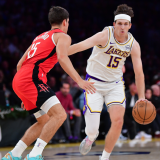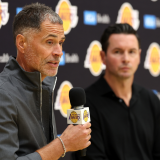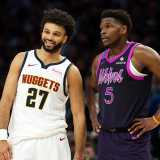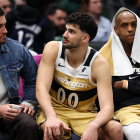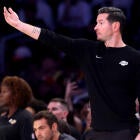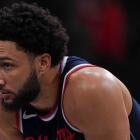
A closer look at Dion Waiters' debut with the Oklahoma City Thunder
Dion Waiters made his debut for the Thunder Wednesday night and it was a lot of what you don't want to see.

Dion Waiters has a reputation of being a chucker on the court. This season with LeBron James, Kevin Love, and Kyrie Irving leading the way for the new look Cleveland Cavaliers, you'd see Waiters on most possessions with his hands raised, calling for the basketball. He wants the ball in his hands because he doesn't lack confidence when it comes to taking a shot. The problem for him is that he's not always taking quality shots and it comes off as poor decision-making.
When the Oklahoma City Thunder acquired him in Monday's three-team deal that sent J.R. Smith and Iman Shumpert to the Cavs, Kevin Durant and the Thunder talked about accepting and believing in Waiters to be a key member of the team. In theory, trusting him would bring out the best in his abilities. Durant and other members want to believe in Waiters because they see untapped or under developed talent.
His debut with the Thunder didn't go well. The team got blown out by the Sacramento Kings and Waiters shot just 1-of-9 from the field for four points. You can live with bad results if the process of trying to get better results was good. And the process of the way Waiters tries to get buckets for himself and his team hasn't always been universally accepted. We saw more of the same reputation that reflects poorly on the shooting guard.
It wasn't all bad though. We saw a couple of rim attacks by Waiters that didn't work out, but they were the right play.
As you can see in both attacks by Waiters, he was stifled by good help defense, rather than putting himself at a disadvantage with the shot selection. In the first one, he drives baseline and Ryan Hollins cuts off the strong side of the rim and forces Waiters into a reverse layup that comes up just short. Perhaps, you can say Waiters should've tried to draw contact and a foul there by going into Hollins but he got a relatively clean shot off.
On the second drive, he's just beaten by a good defensive play by DeMarcus Cousins. At first, Cousins gets a deflection on Waiters' dribble that causes Waiters to pause a bit and corral the ball. Then when he goes up for the layup attempt, Cousins rises up and sends it against the backboard. It wasn't a great shot, but it was a solid attack off the pick from Serge Ibaka.
A few of the jumpers we saw from Waiters in his 1-of-9 performance were workable shots too.
The first attempt is a wide-open 3-pointer created by a secondary transition screen by Kendrick Perkins. It's early in the clock but Waiters is taking an open 3 from almost straight on. That's not a bad shot at all. The second attempt is a pretty clean, although unbalanced look at the end of the third quarter. The third attempt is coming out of an isolation possession near the left corner. Waiters faces up, jab steps, creates space, and knocks down his only make of the game.
A quicker decision on the last shot is recommended but he got a clean look from it. The process isn't perfect there but it's not bad either. These are the types of shots you want Waiters taking. What you don't want him to do is taking bad, contested looks early in the clock when a passing lane is open for a better shot.
Let's look at these shots again with some frame breakdowns. Waiters has a decent look in the right corner that he decides to bypass because of the close by Derrick Williams. Once he's decided to pass on the shot, he should've decided to pass the ball. The first passing option is to Anthony Morrow on the near side wing. Morrow is in position to swing the ball away from the rotating defense with Russell Westbrook and Durant waiting around the perimeter.
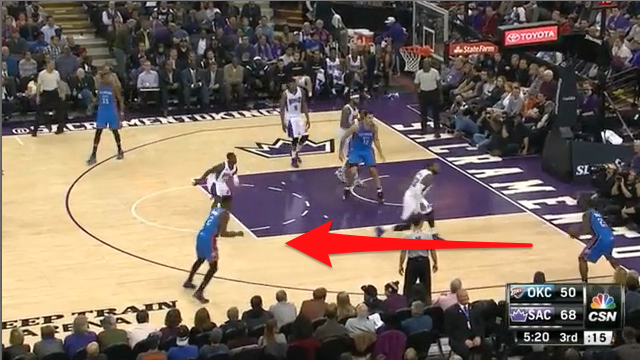
He doesn't make that pass and decides to dribble toward the middle of the court. At that point, the pass to Morrow is gone, but Morrow is pointing to the next possible pass on the play.
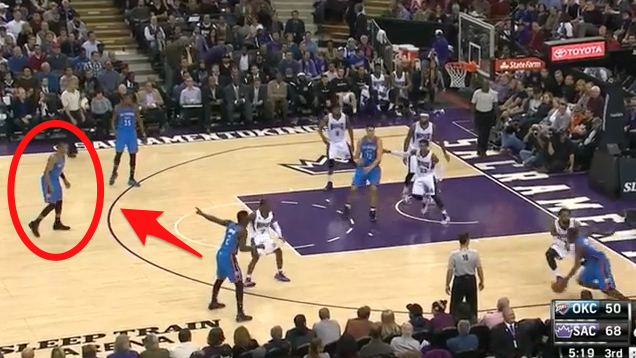
Westbrook is alone at the top and it would force either Darren Collison to rotate away from Morrow or Rudy Gay to rotate away from Durant. Either way, it's a little bit of a trickier pass for Waiters to make, but it's far better than the decision he ends up making with a contested 2-pointer off the dribble.
The next possession in the video has three options for Waiters. The best option would've been lobbing the post-entry pass over the outstretched and pinned arm of Cousins to Steven Adams. A lob toward the baseline side of Adams either gives him great position for a score or forces Carl Landry to rotate inside away from Ibaka, who would be ready for the pass. Waiters doesn't do that.
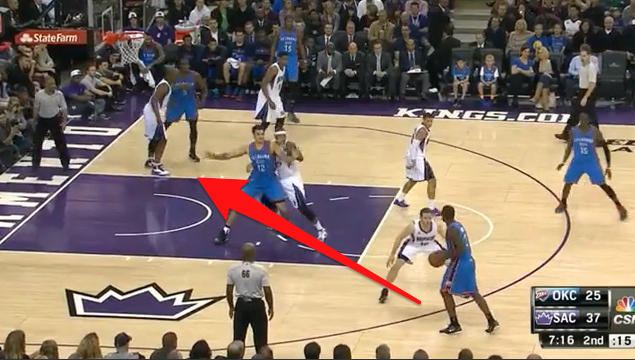
Waiters could have also decided to drive baseline against Nik Stauskas and let Adams seal off Cousins from rotating over. It's a riskier play but it's better than third option, which is ignoring the post-entry pass and taking a poor jumper against the defense.
The third possession in the video is a pick-and-pop with Ibaka. Waiters doesn't attack the paint and he doesn't pass it off to Ibaka, who is floating to an open area where he's deadly with his jumper.
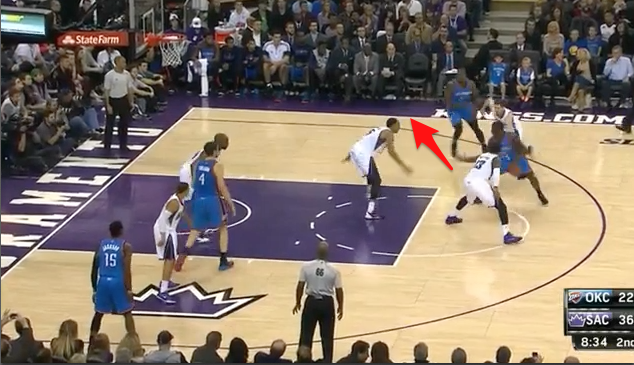
Instead, Waiters over dribbles the ball before tossing up a long, contested 2-point jumper. These are the bad processes that drive people crazy when they're looking for Waiters to maximize his talents. He's a scorer but you need him to be a smart scorer.
He certainly didn't show enough that he was changing his game; although that can be a lot to ask instantly in a debut and it doesn't always show that change is coming. Josh Smith had a great debut with the Houston Rockets earlier in the season and has been inconsistent ever since. The Thunder believe in their developmental program with young players and Waiters now falls into that program.
How they maximize his talents or get him to be the complementary scorer Westbrook, Durant, and the second unit need in order to give this team the best attack possible as they march back toward the playoffs could be the difference between them becoming a title contender again, being a relatively quick appearance in the postseason, or missing the playoffs altogether. It wasn't a good debut and it was a summary of the bad things with Waiters' game, but there's time to work on that.
The Thunder believe in him after all.



